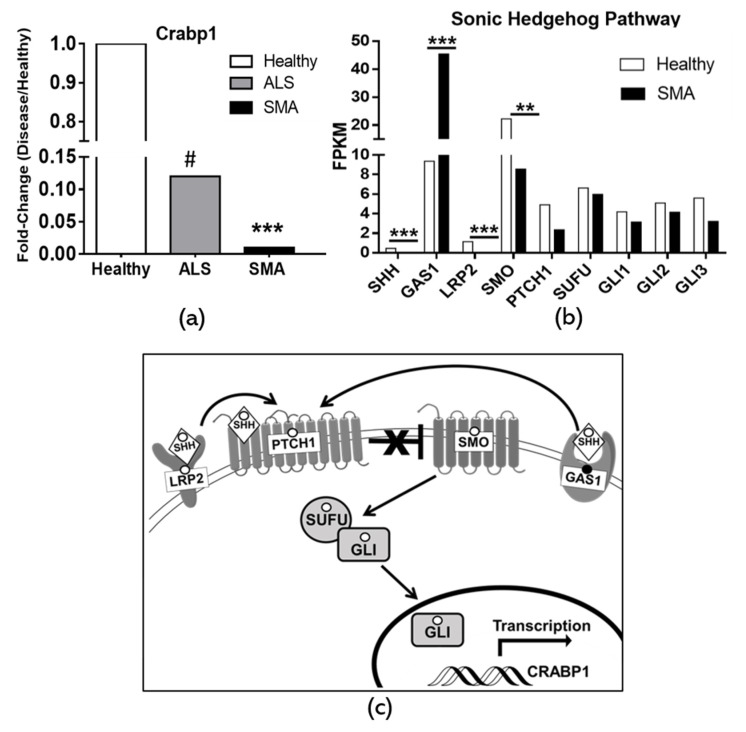Figure 5.
Dysregulation in CRABP1 and Shh signaling components in human motor neuron diseases. (a) Crabp1 gene expression is significantly reduced in patient-derived motor neurons. CRABP1 level is reduced to a 0.12-fold (n = 10) in amyotrophic lateral sclerosis (ALS), and to a 0.01-fold (n = 4) in spinal and bulbar muscular atrophy (SMA). (b) Changes in Shh signaling components shown in the SMA RNA-Seq data available from Rizzo et al. Changes in Shh and its key signaling components including GAS1, LRP2, SMO, PTCH1, SUFU, and Gli1, 2, and 3 are shown. (c) A summary of the Shh signaling pathway that leads to Crabp1 activation. Shh signaling begins with LRP2 and GAS1-assisted release of PTCH1 inhibition of SMO. SMO facilitates the release of Gli1, 2, and 3 from inhibitor SUFU, allowing Gli activation to bind to their targets such as Crabp1. Open circles depict those components whose expression is reduced in SMA, including Shh, LRP2, PTCH1, SMO, SUFU, and Glis. One closed circle “●” depicts the component elevated in SMA because of a reduction in Shh. “#” marks Crabp1 as the top gene out of 30 most significantly down-regulated genes in ALS motor neurons identified by Jiang et al. through GenePix Pro microarray analysis. For SMA RNA-seq data, ** p-value < 0.01, *** p -value < 0.001. Changes in PTCH1, SUFU, and Gli1–3 are not significant, but all exhibit the same trend of reduced expression. RNA-seq analysis was performed using CuffDiff2 Differential Analysis.

